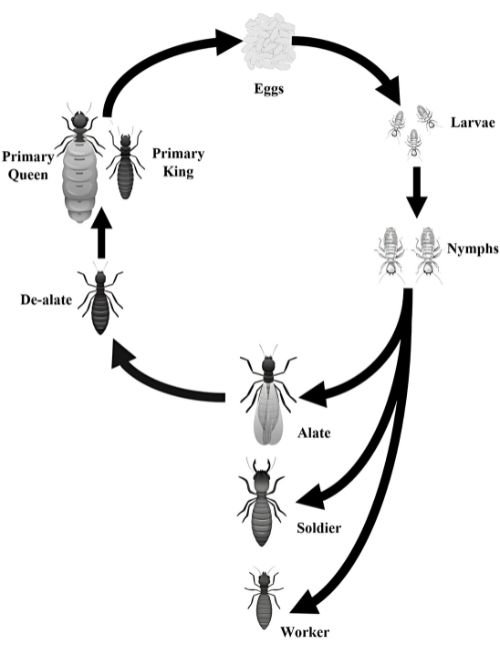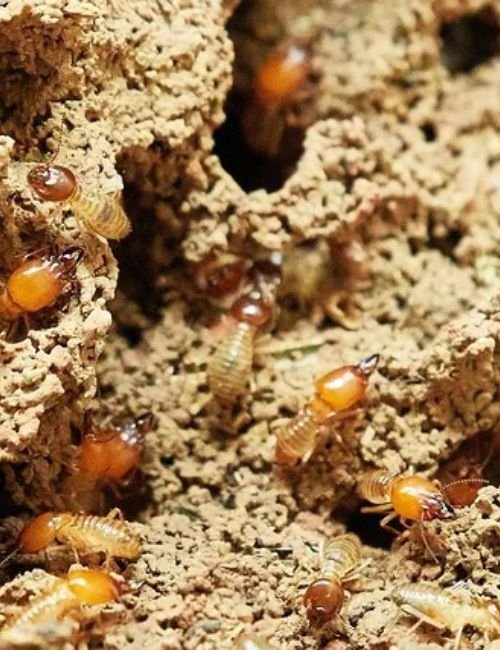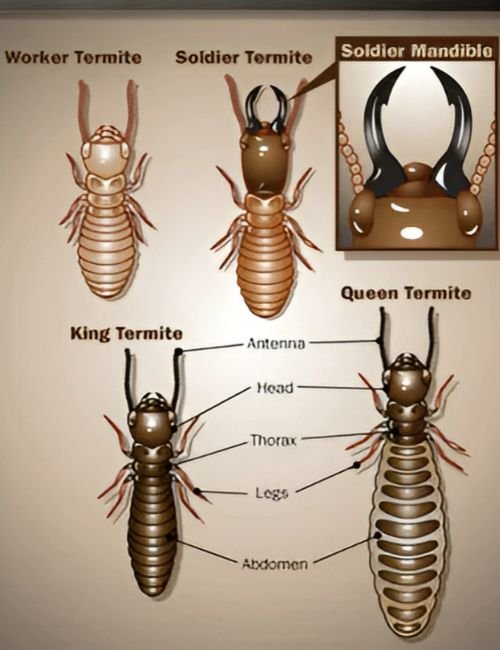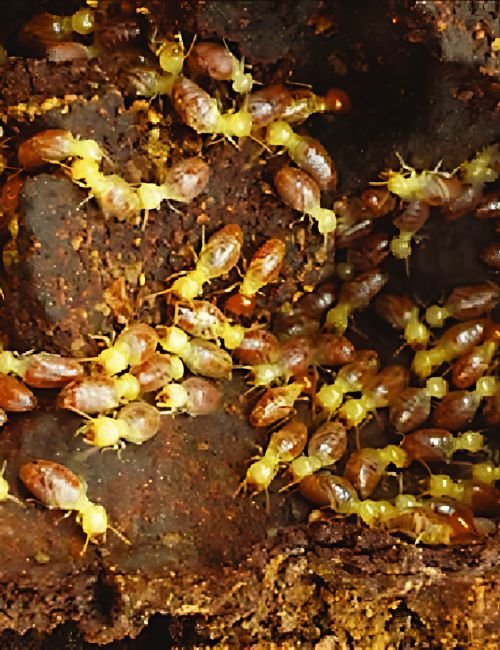Termite Control
Life Cycle
Incomplete (hemimetabolous) - egg, young termite larvae or termite nymph, older nymph, worker, soldier, pseudergate, drone, and queen.
Three different types of termites or caste types
reproductive, workers, and soldiers.
Time of year, diet & Pheromone play a role in determining the development pathway. Pheromone regulates caste, attractor communication, trail making & Maintaining, social cohesiveness, etc.
Many nymph stages (5-13 to reach maturity)
Worker & Soldier - 12-24 months | King 1-4 years | Queen-25-30 years



